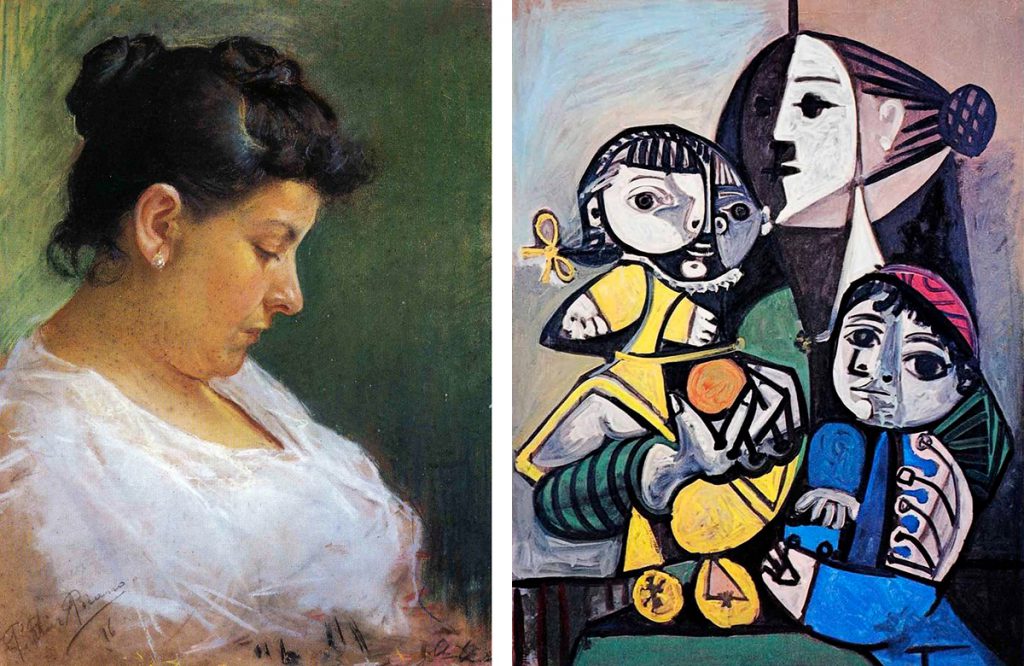left: Paul Baldassini – Early floral and landscape: “Three Peonies”, 2014; right: “Landscape Composition No. 5”, 2024.
Many artists have undergone significant style transformations throughout their careers. The list is long, and not just painters, but bands and musicians, to cite just one other example.
The master artists of the classical era, Rembrandt, Raphael, Da Vinci, Rubens, Vermeer, (a very short list, there were countless others), were a stable enough group it seems, able to have found their métier, and stuck to it, achieving consummate proficiency in their professions.
Signficant changes in styles and subject matter of individual artists came much later, art historically speaking. A fairly obvious example would be Henri Matisse and Pablo Picasso – key figures in inventing modern art – who changed up from painting in a solidly representational art style to a modernist, near abstract style, achieving significant artistic and financial success in their lifetimes.

left: Picasso “Mother” 1896; right; “Mother and Children”, 1965.
Paul Cézanne, my favorite painter, was one of the most influential artists in the history of modern painting. Cézanne changed up from realistic content and a solid painterly style in the manner of Gustave Courbet who preceded him to painting the rich Impressionist effects of light on different surfaces, under the influence of Camille Pissarro. However, Cezanne maintained his concern for solidity and structure throughout, abandoning Impressionism in 1877 preferring instead to focus on the tension between actuality and illusion, description and abstraction, reality and invention. He stamped this mark on all of the work that was to follow, making Cézanne’s most unassuming subjects – the views of local landscape or a white cloth, some apples and oranges on a table, so profoundly satisfying and exciting, providing a legacy for a revolution of form that paved the way for modern art.

left: Paul Cezanne “Picnic”, 1869; right: “Riverbanks”, 1905
Salvatore Dali changed styles not unlike Picasso, his early work radically different from his later more well known signature style. But as Picasso’s work became more abstract, Dali’s became more representational and surreal. In his later years, he also experimented with sculpture and multimedia art.
In more modern times, Richard Diebenkorn for example, an artist whose work I also like very much, went from Abstract Expressionism to representative figuration to landscapes – albeit highly modernist and painterly – later changing to a totally abstract style in his famous “Ocean Park” series.

left: Richard Diebenkorn “Girl On The Beach”, 1957; right: “Untitled”, 1976
Another modern painter to work in radically different styles over the years is Gerhard Richter whose early works range from figurative images based on photographs to his more current complex abstractions.

left: Gerard Richter “Betty”, 1988; right: “Abstract Painting”, 1994
I have also found it necessary, at this point in my life and in my continuing interest in painting, to transform what I do and how I do it with regards to my art. And, like all transformation and change, which often turns out to be quite positive, it’s not without some risk.
More about this in Part 2.
